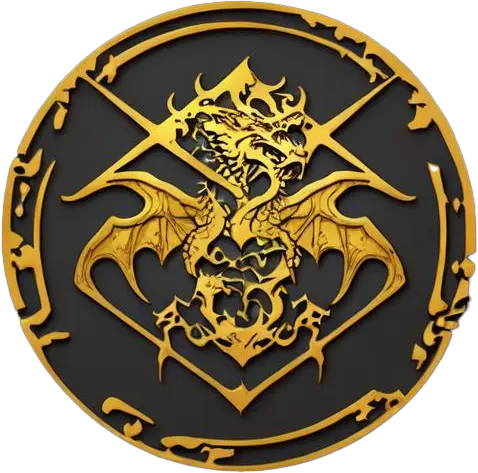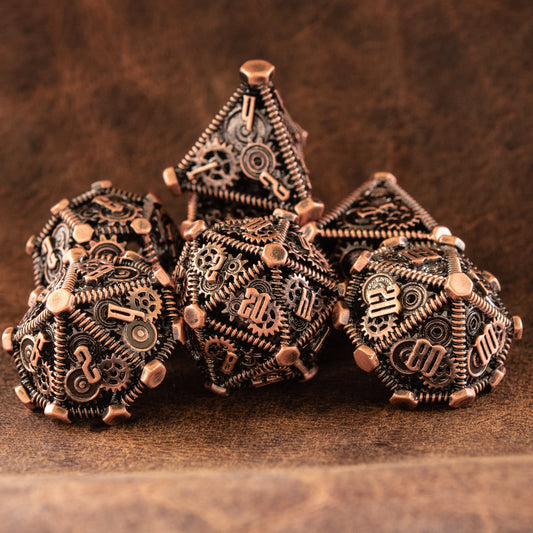Dungeons and Dragons for Beginners(Chapter 3)
Share
Creating Your Character
Creating a character in Dungeons & Dragons is an exciting process that allows you to bring a unique hero or heroine to life. Your character will be your alter ego in the game world, and they’ll embark on epic adventures, overcoming challenges and growing stronger along the way. This chapter will guide you through the essential steps of character creation, from choosing a race and class to developing a backstory and selecting equipment.
1. Choose a Race
The first step in creating your character is selecting a race. The race you choose will determine your character’s physical traits, cultural background, and unique abilities. Here are some common races in D&D:
- Human: Versatile and adaptable, humans gain a bonus to all ability scores and an extra skill proficiency.
- Elf: Graceful and agile, elves have bonuses to Dexterity, keen senses, and resistance to charm effects. Subraces like High Elf, Wood Elf, and Drow offer further customization.
- Dwarf: Sturdy and resilient, dwarves have bonuses to Constitution, darkvision, and resistance to poison. Hill Dwarves and Mountain Dwarves are common subraces.
- Halfling: Small and nimble, halflings have bonuses to Dexterity and abilities like luck and bravery. Subraces include Lightfoot and Stout.
- Half-Orc: Known for their physical prowess, half-orcs have bonuses to Strength and Constitution, along with abilities like Relentless Endurance.
- Tiefling: With infernal heritage, tieflings have bonuses to Charisma and innate spellcasting abilities.
- Dragonborn: Descendants of dragons, dragonborn have bonuses to Strength and Charisma, and a breath weapon attack.
- Gnome: Small and intelligent, gnomes have bonuses to Intelligence and darkvision. Subraces include Forest Gnome and Rock Gnome.
Each race brings unique traits and abilities, so consider how these will complement your character’s class and role within the party.
2. Choose a Class
Your character’s class determines their skills, abilities, and role in the adventuring party. Here are some common classes in D&D:
- Fighter: Versatile warriors skilled in combat, with abilities like Second Wind and Action Surge.
- Wizard: Powerful spellcasters with access to a vast array of spells. Specializations include schools like Evocation and Necromancy.
- Rogue: Stealthy and cunning characters with abilities like Sneak Attack and Evasion.
- Cleric: Divine spellcasters who draw power from a deity, with domains like Life, Light, and War.
- Paladin: Holy warriors dedicated to justice, with abilities like Divine Smite and Lay on Hands.
- Bard: Versatile spellcasters and performers who inspire allies and hinder foes.
- Ranger: Skilled trackers and hunters, adept in wilderness survival and ranged combat.
- Barbarian: Fierce warriors who rely on brute strength and rage.
- Monk: Disciplined martial artists with unarmed strikes and ki abilities.
- Sorcerer: Spellcasters with innate magic, using sorcery points to enhance spells.
- Druid: Nature-based spellcasters who can transform into animals.
- Warlock: Spellcasters who gain power through a pact with a powerful entity.
Each class offers unique gameplay experiences and contributes differently to the party’s success. Consider what type of gameplay you enjoy and how your character will fit into the group.
3. Assign Ability Scores
Ability scores represent your character’s physical and mental attributes. There are six ability scores:
- Strength (STR): Measures physical power.
- Dexterity (DEX): Measures agility and reflexes.
- Constitution (CON): Measures endurance and stamina.
- Intelligence (INT): Measures reasoning and memory.
- Wisdom (WIS): Measures perception and insight.
- Charisma (CHA): Measures force of personality and social influence.
There are several methods to determine your ability scores:
- Rolling: Roll 4d6, drop the lowest roll, and sum the remaining three. Do this six times and assign the totals to your ability scores.
- Standard Array: Use a pre-determined set of scores: 15, 14, 13, 12, 10, 8. Assign these scores to your abilities as you see fit.
- Point Buy: Allocate points to buy your ability scores, with higher scores costing more points. This method allows for greater customization.
Your class and race may influence which ability scores are most important. For example, a wizard benefits from a high Intelligence, while a fighter benefits from a high Strength or Dexterity.
4. Select a Background
A background provides additional skills, proficiencies, and starting equipment, as well as enriching your character’s backstory. Here are some common backgrounds:
- Acolyte: Religious background, with skills in Insight and Religion.
- Criminal: Experience in the underworld, with skills in Deception and Stealth.
- Folk Hero: Champion of the common people, with skills in Animal Handling and Survival.
- Noble: Aristocratic background, with skills in History and Persuasion.
- Soldier: Military experience, with skills in Athletics and Intimidation.
- Sage: Academic background, with skills in Arcana and History.
- Entertainer: Performer background, with skills in Acrobatics and Performance.
- Hermit: Life of solitude and contemplation, with skills in Medicine and Religion.
- Outlander: Wilderness survival expert, with skills in Athletics and Survival.
- Guild Artisan: Skilled tradesperson, with skills in Insight and Persuasion.
- Charlatan: Deceptive and silver-tongued, with skills in Deception and Sleight of Hand.
- Urchin: Street-savvy and resilient, with skills in Sleight of Hand and Stealth.
Your background also provides additional equipment and features that can be beneficial during the game. It helps flesh out your character's history and motivations, contributing to richer role-playing experiences.
5. Choose Equipment
Your class and background determine your starting equipment. Here are some general guidelines:
- Class Equipment: Each class provides a default list of starting equipment, which includes weapons, armor, and other essential items. For example, a Fighter might start with a chain mail, a martial weapon, and a shield, while a Wizard might start with a spellbook, a component pouch, or an arcane focus.
- Background Equipment: Your background adds additional items, such as tools, trinkets, and other personal belongings. For example, a Noble might start with a signet ring and a set of fine clothes, while a Criminal might start with a set of thieves’ tools.
- Gold and Gear: Alternatively, you can roll for starting gold based on your class and purchase equipment from the gear lists provided in the Player’s Handbook. This method allows for greater customization but requires more effort.
6. Develop a Backstory
Your character's backstory enriches their personality and motivations, providing depth and context for their actions. Consider the following elements when creating your character's backstory:
- Origins: Where is your character from? Describe their homeland, family, and early life experiences.
- Motivations: What drives your character? Consider their goals, desires, and personal values.
- Flaws and Strengths: What are your character's strengths and weaknesses? Consider traits that add depth and complexity to their personality.
- Key Events: Describe significant events that have shaped your character’s life. These events could include triumphs, tragedies, or turning points.
- Connections: Think about your character's relationships with other NPCs or party members. Have they crossed paths with other characters before, and if so, what were the circumstances?
7. Final Touches
Once you’ve chosen your race, class, ability scores, background, and equipment, it’s time to finalize your character. Here are the final steps:
- Name and Appearance: Give your character a name and describe their appearance. Consider their physical traits, clothing, and any distinguishing features.
- Alignment: Choose an alignment that reflects your character’s moral and ethical perspective. Options range from Lawful Good to Chaotic Evil, with various shades in between.
- Personality Traits: Write down a few personality traits, ideals, bonds, and flaws. These help guide your role-playing decisions and make your character more relatable.
- Spells: If your character is a spellcaster, choose their starting spells. Refer to your class’s spell list and the rules for preparing and casting spells.
Example Character Creation
To illustrate the character creation process, here’s an example character:
-
Race: Wood Elf
- Ability Score Increase: +2 Dexterity, +1 Wisdom
- Traits: Darkvision, Keen Senses, Fey Ancestry, Trance, Mask of the Wild
-
Class: Ranger
- Primary Ability: Dexterity and Wisdom
- Hit Dice: d10
- Features: Favored Enemy, Natural Explorer, Fighting Style (Archery), Spellcasting
-
Ability Scores:
- Strength: 10
- Dexterity: 16
- Constitution: 14
- Intelligence: 12
- Wisdom: 15
- Charisma: 8
-
Background: Outlander
- Skills: Athletics, Survival
- Equipment: Staff, hunting trap, trophy from an animal, set of traveler’s clothes, belt pouch with 10 gp
-
Equipment:
- Class Equipment: Scale mail, longbow and 20 arrows, two shortswords, explorer’s pack
-
Backstory:
- Origins: Born in a secluded forest village, raised by a tribe of wood elves.
- Motivations: Seeks to protect the natural world from encroaching threats.
- Flaws and Strengths: Strong connection to nature, but distrustful of city dwellers.
- Key Events: Witnessed the destruction of part of the forest by loggers, vowed to protect the wilderness.
-
Final Touches:
- Name: Elaran
- Appearance: Tall and slender with green eyes and long brown hair, wears travel-worn clothing and a cloak.
- Alignment: Neutral Good
- Personality Traits: Calm and observant, values harmony with nature.
- Spells: Cure Wounds, Hunter’s Mark
By following these steps, you’ll create a well-rounded character ready to embark on adventures in the world of Dungeons & Dragons. In the next chapter, we’ll delve into understanding the game mechanics, including dice rolling, skill checks, saving throws, and combat. Stay tuned for more adventures!

